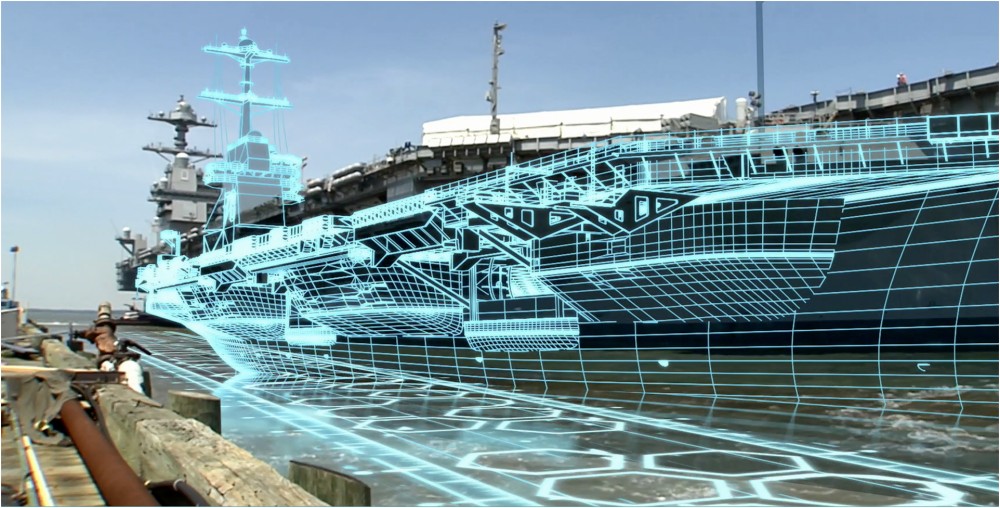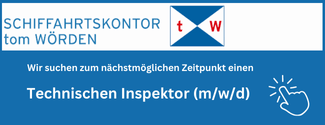How is digitalisation becoming visible in ship technology? And what can be expected in the future? Insights on these questions are regularly provided by the COMPIT expert conference. Hans Payer reports from this year’s edition, which took place in Italy
The 21st Compit conference took place from June 21 to 23 in a mon[ds_preview]astery from the 14 th century near Siena, the Carthusian Pontiniano. About 50 maritime experts and scientists from diverse countries, with differing specialisations and of a wide spread of age, united in their enthusiasm to look with optimism into the future, actively participated in this wonderful event. The general theme was »Trends in Maritime IT- Application«. There was an underflow agreement amongst participants that after well more than 150 years of mechanical developments and automation, assembly lines and construction of train systems in many countries we stand at the beginning of the century of digitalisation in the 21th century.
35 papers on diverse subjects regarding the immediate present and the future of the maritime world were presented and discussed. The former monastery turned out to be a very good and thought-provoking place for the presentations during the different conference sessions and for discussions in the breaks, where many ideas were developed and exchanged. Happy swallows were sailing through the cloisters overhead.
Smart Ship Design
In an introductory paper on Smart Technologies for Improving Ship Design Tools, Rodrigo Perez Fernandez from Siemens Digital Industry Software in Spain and professor of Maritime Technology at the University of Madrid, described the present and expected future situation:
Smart technologies are today widely common topics in most industries. The question is, do we really understand everything implied in the term? Generally, these are formed by a fusion of multiple technologies sharing the same ambition: digital transformation. Nevertheless, the peculiarities and differences found in them require a subtle and delicate analysis to establish how they can best be applied to each specific industry.
The Marine Industry – dealing arguably with the largest mobile objects in the world – is being forced to enter this atmosphere of change. It is absolutely needed for survival, following a somewhat slow and uncertain adjustment process up to now. The key at this point is choosing the right strategies and the best way to be successful using them.
At the centre of this smart system lies a 3D model of a ship of any type, created mainly with CAD tools. Digital twins are developed which link the 3D CAD model and the interacting partners in the design and production of the product within what is referred to as Industry 4.0. The real world and the virtual world are both acting concurrently during the evolution of the design, the construction, and the production of the ship. Ideally, this world of possibilities is extended over the entire lifecycle of the product.
At the core of these processes, CAD tools have evolved, which may easily be linked to these new technologies.
To remain competitive, it is mandatory for the shipbuilding industry to understand how these technologies can improve the processes and the workflow as well as the cooperation between stakeholders. There is no global solution for all industries. Digitalisation in the Maritime world is available, and it is mature enough to be implemented and become part of our strategy for the future.
Digital transformation requires suitable strategies to identify the added value obtained in relation to the necessary investments. In the current uncertainties we have to face, a good strategy leading to good results is to start with small projects that have sufficient viability to be evaluated without large investments (Minimum Viable Products). It has been proven that this approach can bring good results, even exceeding expectations, without compromising too much on risks or investment. The key for success is to clearly define objectives, as well as identifying the correct technologies to apply.
Furthermore, using visual tools for the presentation of results facilitates the work of engineers and decision makers. These tools are complemented by dashboards that must be adapted and personalised depending on the users or the shipyard needs.
Another important point: future smart ships and yards must be interconnected. Otherwise, they can’t use their potential. The connection of smart devices within a smart ship or smart yard must be controlled by humans. The information shared must be managed along the whole lifecycle of the ship and the yard (workshops, docks, berths…), starting from the beginning of the initial design.
Digital Twins
Listening to the presentations the importance of the Digital Twin concept in modern design and production has evolved as one of the big topics in the engineering world, including the maritime industries. At the core of any Digital Twin will be a 3D geometrical representation, which opens the door for numerous applications in simulating physical behaviour and Virtual Reality interaction. Complex Ship new-building projects are expected to be designed and built with a Digital Twin in the future.
For ships without appropriate digital representation of the as-built status, 3D laser scanning has been found to be a very successful way forward by Marius Blom of Blom Maritime from Lysaker in Norway. In his experience, »data at your fingertips« as is the case with a good digital twin have saved up to 30 % on material cost and up to 35 % on man-hours in retrofit projects. Initially motivated for retrofits, the geometrical digital twin created by advanced 3D laser scanning has been found to be very versatile also for other applications, such as preventive maintenance or training. Integration of 3D scan point clouds in CAD software has been streamlined and can now be seen best business practice also in the maritime world.
An interesting example of digital twin was described by Thomas DeNucci of the U.S. Coast Guard.
A study was triggered when the fishing vessel »Scandies Roise« capsized in extreme spray-icing conditions on 31 December 2019 with the loss of five of seven fishermen onboard. Testimony identified current vessel regulations may not accurately account for vessel icing on crab pots – a porous surface of webbing and open spaces where icing can accumulate in a non-uniform pattern. The lack of understanding of this situation may put mariners and the marine environment at undue risk. DeNucci described a methodology for predicting ice accretion on vessels operating in high latitudes.
Machine Learning
Machine Learning has many tasks in ship design. Anomalies can for instance be identified at different moments of the lifecycle of the project. Machine Learning also makes it possible to optimise the resources used, by ensuring the highest possible standardisation of parts, standardising materials and manufacturing. This will ultimately result in a reduction of design and construction cost.
A good example of the capabilities of Machine Learning in design was presented by Thomas Hildebrand of Numeca with the paper »Accelerating Marine Propeller Development in Early Design Stages using Machine Learning«. A machine learning approach was presented to accelerate the design of marine propellers. For open-water propeller characteristics, neural nets are trained to predict both integral quantities of open-water performance curves and local field values of velocities and pressures on two-dimensional planes for Wageningen B-Series propellers. The average difference between the predicted and CFD- obtained values remained below 1.5% for integrated quantities (thrust, torque, efficiency).
This demonstrates that the quasi- instantaneous response of a trained neural net may accelerate propeller design significantly. Thomas Hildebrand has received this year’s »Compit Award« for his numerous contributions and support to the conference for many years.
Openness and Collaboration
The topic of openness regarding data and the use of software has repeatedly come up in the discussions at Compit this year. Besides Rodrigo Perez Fernandez in his overview on Smart Technologies for Improving Ship Design Tools, also Enrique Gaspar of NTNU Alesund closed his paper with »A Call for Openness and Collaboration in Ship Design«. He addressed his colleagues and students to consider implementing open and collaborative methods in the everyday design tasks, both at academia as well as in industry. A GitHub page for a project – either public or private – is an experience highly recommended. As GitHub is used to manage large software projects, it has functions like allocating tasks, discussions on traceability in pair (or even better) than most of PDM/PLM solutions. Giving up proprietary data-files in exchange for a standard among all tools seems to be a feasible path.
As a final call, it would be nice to see academia really incorporating the open science concept, where the data from public funded projects is not only found in hidden papers, but in a repository, able to be accessed, scrutinised and re-used. For software developments, many models suggest that open standards and interfaces are key to success in the market, and may be a lucrative approach.
Remote Inspections using Drones
Erik Stensrud of DNV and Kristian Klausen of ScoutDI reported about their development and experience with automatic inspection of cargo and ballast tanks using drones already at Compit 2019 and 2020. This year, two important forthcomings were described: The drone pilot operated the drone from outside the tank, i.e. beyond his line of sight (BLOS). Additionally, this form of inspection was declared equivalent to traditional class requirements by the attending surveyor.
A field trial on board a chemical tanker is described. At first the drone was tested operated by wifi / bluetooth connection without a tether. The mirror-like reflecting surfaces of stainless steel however posed problems with wireless transmission of the signal here. Therefore a tethered solution was used. The drone also enabled visual close-up inspection of the upmost parts of the compartment, a capability not available before. The tethered system allowed for continuous inspection, saving time and eliminating signal loss during flight. An anti-collision system prevented contact with the structure. Results of detecting and tracking cracks in videos are summarised.
The Virtual Classroom
Towards the end of the Conference, Tracy Plowman from DNV gave a lively lecture on her experience after more than two years delivering maritime training digitally. She describes the disruption from the COVID-19 pandemic as a problem and a chance. Training had to be changed spontaneously, the key vehicles were suddenly virtual classroom and e-learning. The problem developed into an opportunity. There was the signal from the Top: Digital is here to stay.
The emergency is now over, long term solutions have to be found. In-line with the DNV sustainability drive. Can we move from real to digital in training?
What did we learn? Before the change, classroom materials were just sufficient for the real classroom. Experience soon showed, training hours per day had to be shortened. Teaching online requires new skills and more preparation time. Also, post-pandemic people have more experience with online training and are more demanding. Customers in certain remote locations will however request to keep the online learning option going. It is expected, training solutions will become more complex, with more blended or hybrid options available.
The Virtual Classroom is quick to develop. It has direct access to experts and direct interaction between experts and students is possible. Experience has shown that Live online training also has its challenges: language and accent challenges, engineers may have charisma problems, people sometimes get Cyber Fatigue. Evaluations show, there may be a requirement for more liveliness in the course. Solution: a lot less text – more imagery. The final result: Online learning is not as interactive as classroom learning. There is less knowledge-sharing. Most pupils hope to be back to classroom learning soon.

















